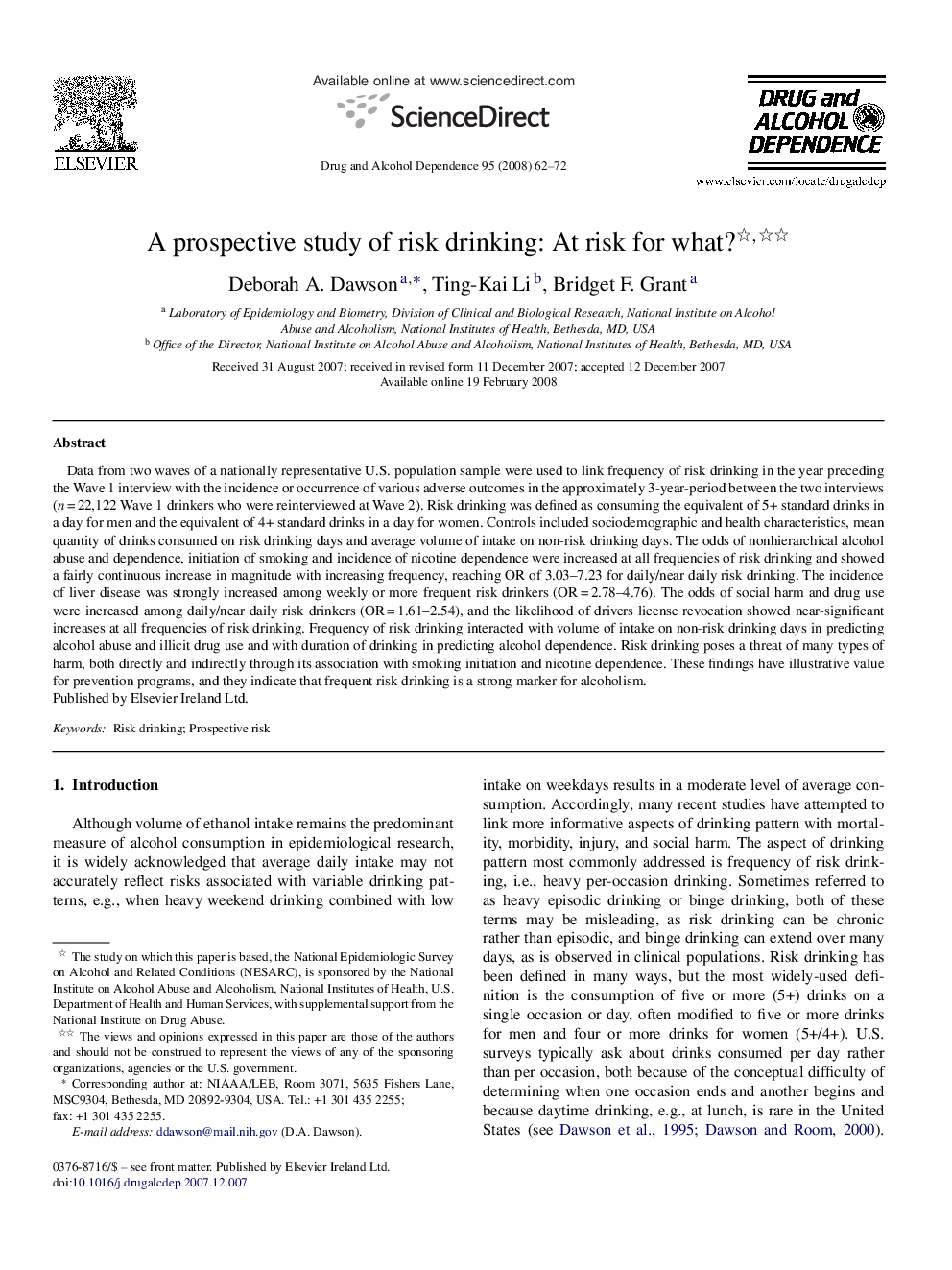| Article ID | Journal | Published Year | Pages | File Type |
|---|---|---|---|---|
| 1070619 | Drug and Alcohol Dependence | 2008 | 11 Pages |
Data from two waves of a nationally representative U.S. population sample were used to link frequency of risk drinking in the year preceding the Wave 1 interview with the incidence or occurrence of various adverse outcomes in the approximately 3-year-period between the two interviews (n = 22,122 Wave 1 drinkers who were reinterviewed at Wave 2). Risk drinking was defined as consuming the equivalent of 5+ standard drinks in a day for men and the equivalent of 4+ standard drinks in a day for women. Controls included sociodemographic and health characteristics, mean quantity of drinks consumed on risk drinking days and average volume of intake on non-risk drinking days. The odds of nonhierarchical alcohol abuse and dependence, initiation of smoking and incidence of nicotine dependence were increased at all frequencies of risk drinking and showed a fairly continuous increase in magnitude with increasing frequency, reaching OR of 3.03–7.23 for daily/near daily risk drinking. The incidence of liver disease was strongly increased among weekly or more frequent risk drinkers (OR = 2.78–4.76). The odds of social harm and drug use were increased among daily/near daily risk drinkers (OR = 1.61–2.54), and the likelihood of drivers license revocation showed near-significant increases at all frequencies of risk drinking. Frequency of risk drinking interacted with volume of intake on non-risk drinking days in predicting alcohol abuse and illicit drug use and with duration of drinking in predicting alcohol dependence. Risk drinking poses a threat of many types of harm, both directly and indirectly through its association with smoking initiation and nicotine dependence. These findings have illustrative value for prevention programs, and they indicate that frequent risk drinking is a strong marker for alcoholism.
